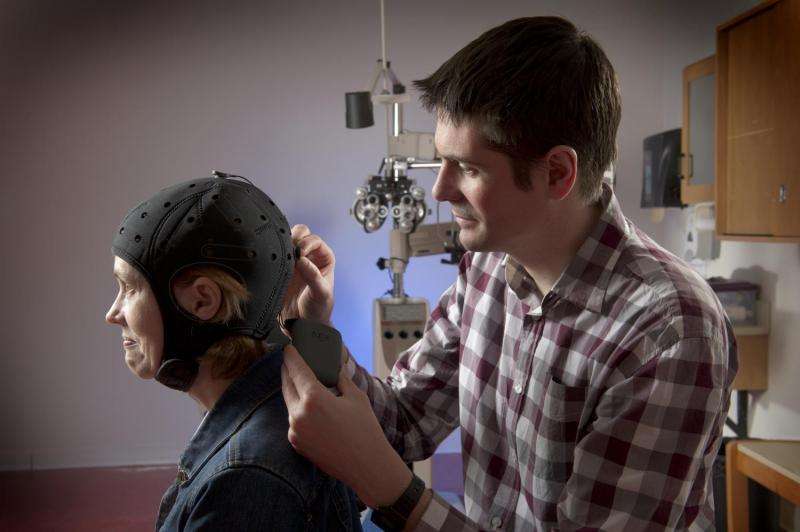Vision scientists discover potential treatment for adults with lazy eye

A new treatment for adults with lazy eye, a condition previously thought to be treatable only in childhood, is one step closer as a result of research from the University of Waterloo in Canada and Sun Yat-sen University in China.
Waterloo vision scientist Ben Thompson with collaborators from China have shown that low voltage electric currents can temporarily improve sight in adult patients with lazy eye, or amblyopia.
"Until fairly recently, the prevailing view was that if adults couldn't develop amblyopia, they couldn't be treated for it," says Thompson. "This was the same for anyone with brain-based vision problems - they're often told there's nothing that can be done about their vision loss."
In a proof-of-concept series of experiments, Thompson and his colleagues exposed patients to twenty minutes of transcranial direct current stimulation (tDCS) applied to the surface of the head, directly over the primary visual cortex.
They found the treatment temporarily increased the response of that part of the brain to visual information from the lazy eye. tDCS also improved patients' ability to see low contrast patterns.
Their results were published this month in Scientific Reports.
"It's a long held view that adults can't be treated for lazy eye because their brains no longer have the capacity to change," says Thompson. "We demonstrate here that adults do have the capacity, especially when it comes to vision."
Methods such as transcranial direct current stimulation (tDCS) have recently been shown to increase adult neuroplasticity - the brain's ability to rewire and reorganise itself.
Lazy eye is a loss of vision that originates in the brain. It affects up to three per cent of Canadians and is caused by the presence of unequal images in the two eyes during childhood, typically due to an eye turn or one eye being long sighted.
The unequal input can cause the brain to process information from the weaker eye incorrectly. Unless the brain processing issue is treated, the vision loss remains, even after the problems in the eye are fixed. If left untreated, lazy eye increases a patient's lifetime risk for legal blindness by 50 per cent.
"Amblyopia is an issue here in Canada, but much more so in countries where access to basic vision care for children is challenging," says Thompson.
That said, amblyopia in children is very treatable because their brains are so responsive.
It's a different story for adults whose brains have long passed out of the critical developmental period. Differences in the images seen by each eye that occur in adulthood do not result in amblyopia.
Other research groups have suggested that tDCS might also have beneficial effects in patients with vision loss due to stroke.
Thompson says these initial results demonstrate the proof-of-concept that will allow him and his research group to take the next step towards clinical trials.
"Our ultimate goal is to develop an evidence based treatment that patients can receive right in their eye doctor's office," says Thompson. "We expect there are other primary visual cortex problems that we may be able to address with this method."


















